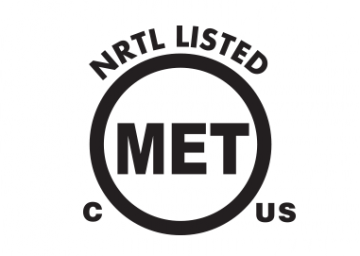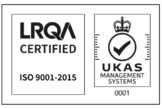Electrical Safety Testing
Meeting the requirements of the European Low Voltage Directive (LVD), 2014/35/EU, is an essential part of the CE Marking process.
Electrical Safety testing forms a central part of CE Marking and the assessment aims to ensure that a product has been designed and manufactured to be safe and not present a hazard to the user.
We provide electrical safety testing to harmonised European standards to allow manufacturers to demonstrate compliance to the European Low Voltage Directive (LVD), 2014/35/EU for CE marking, as well as providing them with the confidence to place their products on the market knowing that their products are safe to use.
We have been offering electrical safety assessments and compliance testing to International (IEC), European (EN) and other national standards for over 15 years and in addition to CE marking can help you access global markets access through the CB Scheme. We have extensive test facilities including three UKAS accredited test laboratories in Castleford near Leeds, Grangemouth in Scotland and London.
Please refer to our UKAS schedule for details of specific standards that we are accredited to. In agreement with UKAS we operate a Flexible Schedule of Accreditation which makes it possible for us to add some standards directly to our UKAS schedule. If the standard you require testing to is not currently on our UKAS schedule, please contact us so that we can assess your requirements.
Common electrical safety tests
Although commonly referred to as electrical safety testing, the actual assessments carried out extend well beyond a product’s electrical characteristics as shown below
- Electric shock hazards
- Energy related hazards
- Fire
- Heat related hazards
- Mechanical hazards
- Radiation
- Chemical hazards
- Abnormal operation, including faults and failures within the equipment
As with Electromagnetic Compatibility (EMC), it is important to consider electrical safety for compliance with the LVD for European CE marking at the design stage, as it makes any necessary modifications both easier and more cost effective to implement.
Electrical Safety Testing Vs Portable Appliance Testing (PAT)
Sometimes there is confusion between electrical safety testing and PAT which is routinely carried out on appliances that can generally considered to be portable. Electrical safety testing assesses the design and manufacture of a product and is part of the CE marking requirements to legally place a product on the market. This is distinct from PAT which is a limited test of a product’s electrical characteristics to ensure on-going safety during use.
A product that is electrically safe when it is placed on the market may subsequently suffer wear or damage in use causing it to fail PAT. A product that is incorrectly CE marked and does not meet the requirements of the Low Voltage Directive may pass PAT.
Electrical safety testing and PAT are both requirements and have different purposes.
CB Scheme
Eurofins E&E UK is part of the IECEE CB Scheme as a CB Test Laboratory (CBTL). The scheme operates in over 50 countries including North America.
Testing your product under the CB Scheme at one of our UKAS accredited test laboratories in the UK, reduces the need for duplicate testing, saving both time and money, whilst gaining access to a truly global market.
We can also provide access to Nationally Recognised Test Laboratory (NRTL) Certification by MET Labs in North America for access to North America and Canada including factory audits.
The New Low Voltage Directive (LVD) 2014/35/EU
The New Low Voltage Directive (LVD) 2014/35/EU came into force on 20th April 2016 with no transition period. Electrical safety compliance with the new European LVD is an essential part of the CE marking process.
The provisions in the new directive have an effect not just on manufacturers but also authorised representatives, importers and distributors in the EU.
To learn more about 2014/35/EU you may wish to attend our one day training course entitled “The Low Voltage Directive Explained“.
















 During the holiday period, our E&E UK offices and laboratories will only be open on selected days. If you have any questions, please contact the appropriate team who will be pleased to help.
During the holiday period, our E&E UK offices and laboratories will only be open on selected days. If you have any questions, please contact the appropriate team who will be pleased to help.
